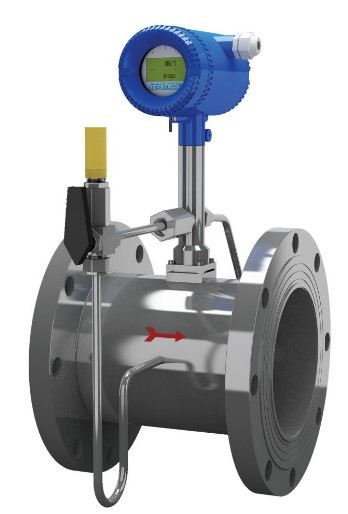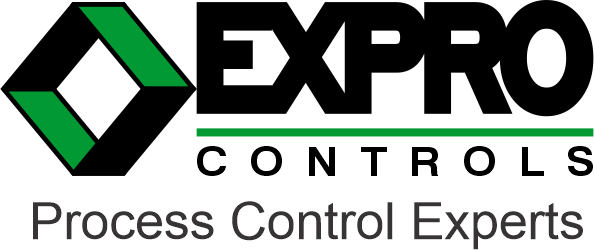What is a Vortex Flow Meter?
A vortex flow meter is a type of volumetric flow meter used to measure the flow rate of fluids or gases in a pipe.

How does a Vortex Meter Work?
Vortex meters utilize the natural phenomenon known as the vortex shedding principle. The principle requires a liquid or gas flowing through a pipe and an obstruction to that flow path. This obstruction is known as a bluff body, and it is typically a triangular or rectangular bar in the middle of the pipe. The bluff body causes process fluids or gases to separate and form alternating vortices on either side of it. The shedding caused by the bluff body occurs periodically and symmetrically due to the fluid or gas’s inertia and viscosity.
Thus, a flow meter can be installed downstream to measure the vortices as they cause slight pressure fluctuations. As a result, the pressure fluctuations are detected by the built-in sensor of the vortex flow meter. The sensor is typically made of piezoelectric crystals that when they contract create an electrical charge. The electrical signal is then analyzed to determine the flow rate of the fluid or air passing through the pipe as it is directly proportional to the velocity of the fluid.
What are the Benefits?
There are lots of benefits that can be gained from using a vortex meter. The first benefit is that vortex meters provide high-accuracy flow measurement across a broad range of flow rates. Secondly, there are no moving parts leading to less maintenance and a reduced last time. Lastly, vortex meters can measure a variety of liquids, gases, and even steam and can be used in both high pressure and low-pressure applications for each.
What Industries do They Serve?
Vortex meters are used in the process food and beverage, pharmaceutical, water and wastewater, and petrochemical industries.
